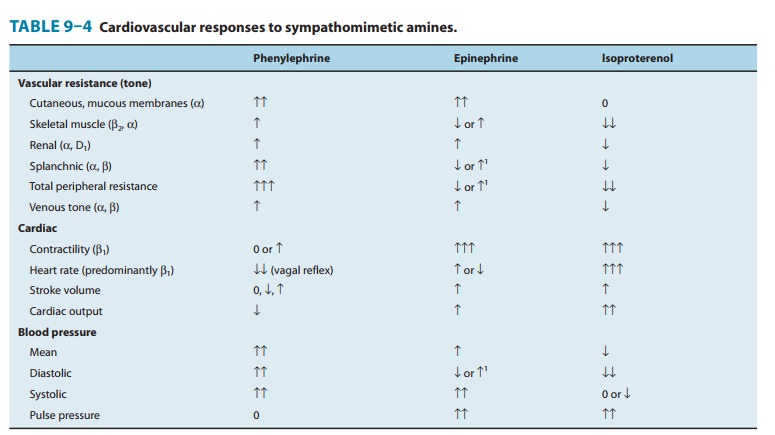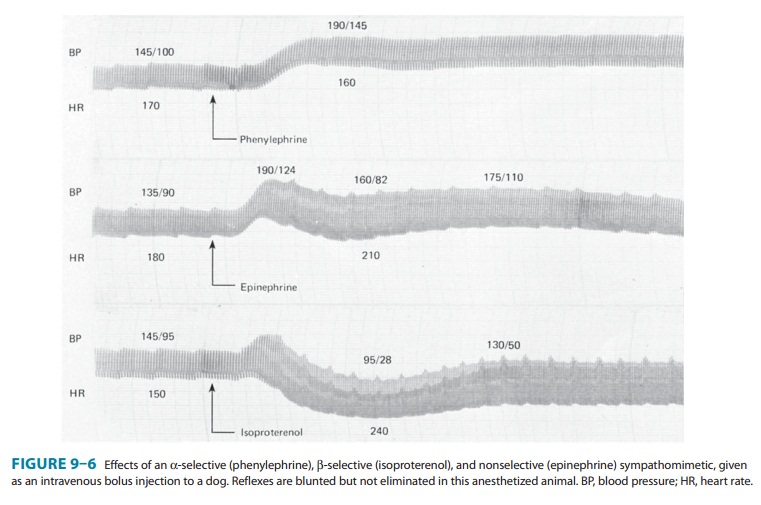Chapter: Basic & Clinical Pharmacology : Adrenoceptor Agonists & Sympathomimetic Drugs
Endogenous Catecholamines
SPECIFIC SYMPATHOMIMETIC DRUGS
Endogenous Catecholamines
Epinephrine (adrenaline) is an agonist at bothαandβreceptors.It is therefore
a very potent vasoconstrictor and cardiac stimulant. The rise in systolic blood
pressure that occurs after epinephrine release or administration is caused by
its positive inotropic and chronotropic actions on the heart (predominantly β1 receptors) and the
vasoconstriction induced in many vascular beds (α recep-tors). Epinephrine also activates β2 receptors in some
vessels (eg, skeletal muscle blood vessels), leading to their dilation.
Consequently, total peripheral resistance may actually fall, explaining the
fall in diastolic pressure that is sometimes seen with epineph-rine injection
(Figure 9–6; Table 9–4). Activation of β2 receptors in skeletal muscle contributes to
increased blood flow during exer-cise. Under physiologic conditions,
epinephrine functions largely as a hormone; after release from the adrenal
medulla into the blood, it acts on distant cells.

Norepinephrine (levarterenol, noradrenaline) is an agonist
atboth α1 and α2 receptors. Norepinephrine also activates β1 recep-tors with
similar potency as epinephrine, but has relatively little effect on β2 receptors.
Consequently, norepinephrine increases peripheral resistance and both diastolic
and systolic blood pressure. Compensatory baroreflex activation tends to
overcome the direct positive chronotropic effects of norepinephrine; however,
the posi-tive inotropic effects on the heart are maintained.
Dopamine is the immediate precursor in the synthesis of
nor-epinephrine (see Figure 6–5). Its cardiovascular effects were described
above. Endogenous dopamine may have more impor-tant effects in regulating
sodium excretion and renal function. It is an important neurotransmitter in the
central nervous system and is involved in the reward stimulus relevant to
addiction. Its deficiency in the basal ganglia leads to Parkinson’s disease,
which is treated with its precursor levodopa. Dopamine receptors are also
targets for antipsychotic drugs.

Related Topics